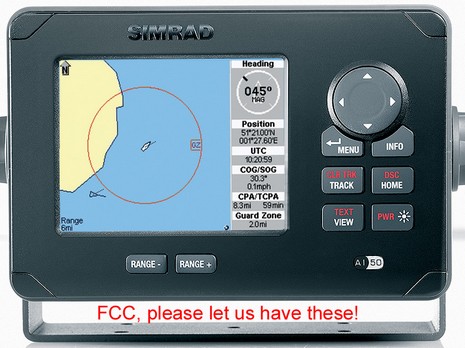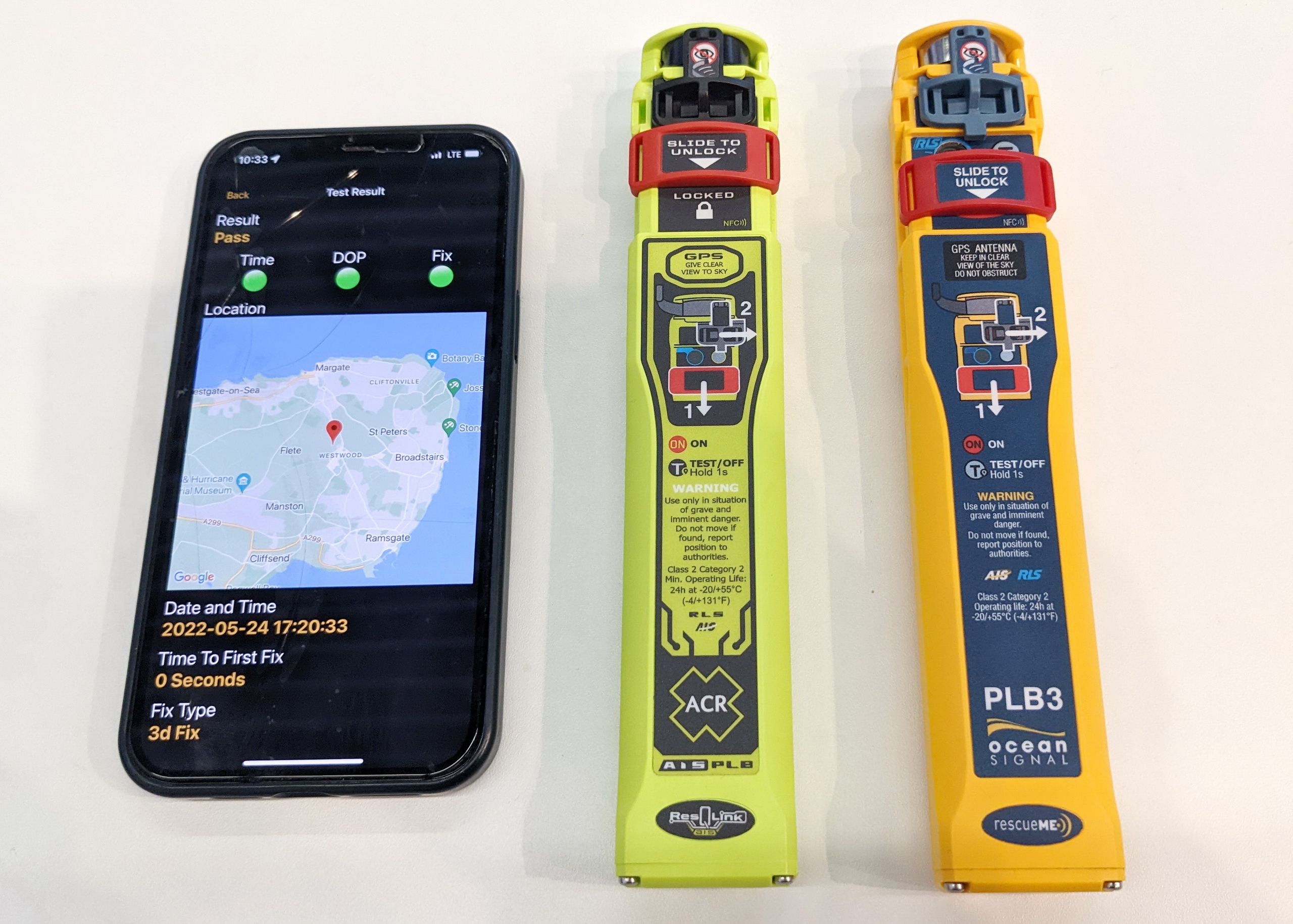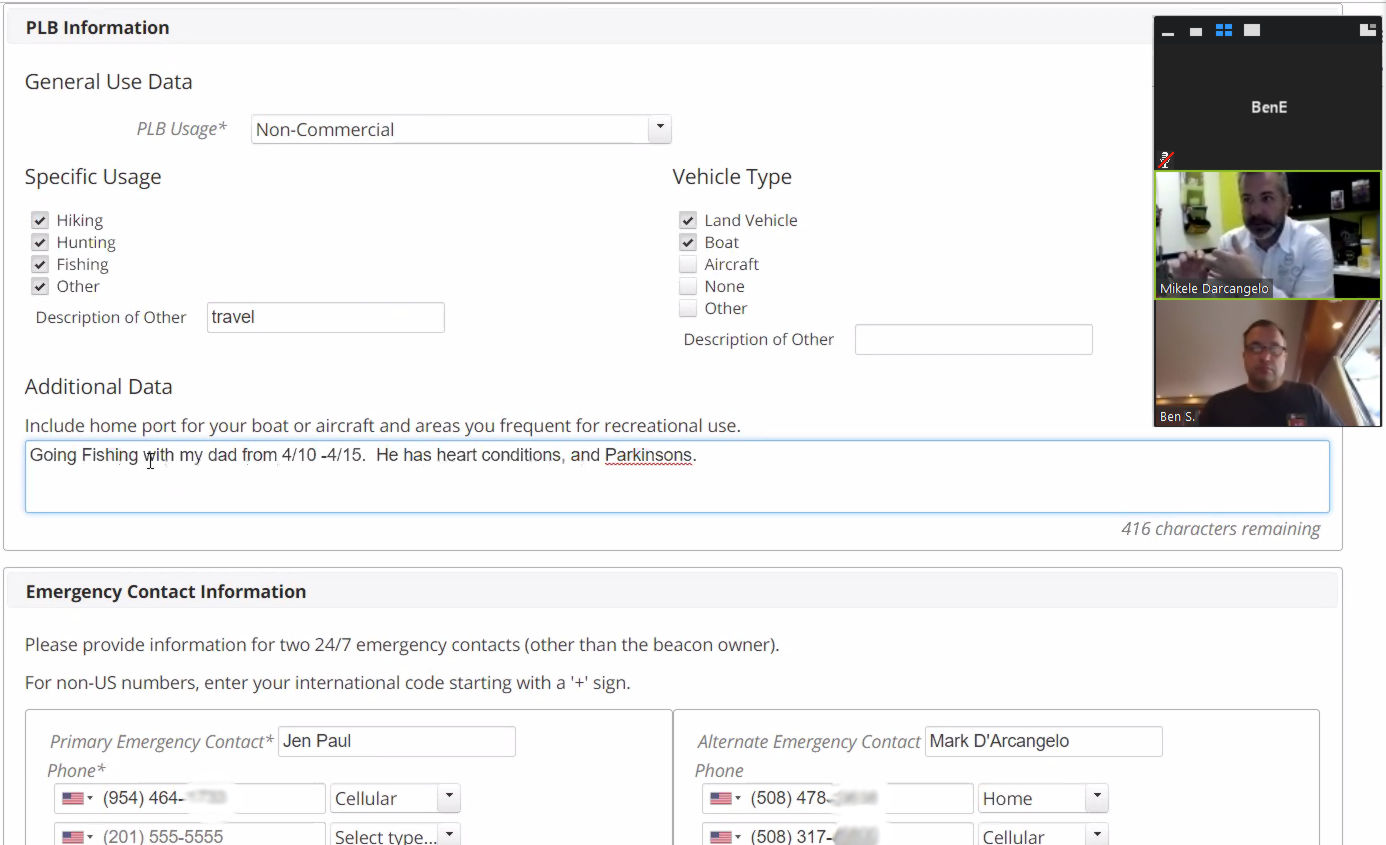SPOT on, Sail’s innovation awards

Friday’s entry may not have been clear; I only meant to snipe at the New York Times (lightly), and not at Spot. In fact, Spot was one of my four picks for the electronics section of Sail’s annual Freeman K. Pittman Innovation Awards, mentioned earlier with other M.E. awards and now out in the February issue (though sadly not on line). While it is certainly not a PLB, I think Spot could be pretty useful on a boat, or ashore. But understanding well how it compares to PLBs is critical, and hence why I’m sniping at confused coverage.
Another pick was Furuno’s FI50 instruments, based on their power efficient and automatic OLED screens and their nifty implementation of standard NMEA 2000 with daisy chaining and bridging to an analog wind sensor (via the third plug seen on the the close hauled dial above, and first discussed here). I also thought the FI50’s would be out sooner than NavNet 3D (which I think of as a contender for next year’s awards), but now I’m not sure (our picks are supposed to be available at least early this year). Another winner, the unique Simrad A150 Class B AIS, may have the same problem, but it will the FCC’s fault not Simrad’s (I’m told they’re stacked up in Tulsa, ready to ship). Finally, I gave Garmin an award for the new interface seen on all its new displays, particularly the “Where To?” approach to routing, which I think will become the norm.
Other contenders? Well, I made my choices back in November, but recall that ClearPoint Weather and Raymarine’s ST70 and HD radar were all my scratch list. High Def radar, which is apparently being introduced in steps, is definitely on my 2009 list.













You mentioned that the FI-50’s have daisy chaining, but the three connectors on the back of that instrument all look different. Assuming one (top?) is for the wind wand, and the right one is a NMEA 2000 connector, what is on the left?
That’s NMEA 2000 female, Russ, hence the daisy chain ability. Which, by the way, may not be completely “legit” within the Standard because, if this device dies, upstream data will not make it to the backbone. Furuno’s thought is that — should there be such a problem — a user can just pull the instrument and screw the N2K in and out cables together. Back in business!
Spot is on to something. Consider that Steve Fossett (the famous adventurer) had an ELT but it never activated; the extensive search for him and his plane was because he was missing. Consider that Jim Gray (famous computing scientist) had an EPIRB but it never activated; the extensive search for him and his sailboat was because he was missing. More about that unusual search here:
http://www.wired.com/techbiz/people/magazine/15-08/ff_jimgray
This might be a more typical case: “A B.C. couple who left Hilo, Hawaii on Sept. 8 and disappeared on their 4,800-kilometre sailboat voyage to Victoria are presumed dead” and “Two other sailboats have been reported missing in the same vast area this fall” (quotes from http://www.westcoaster.ca/modules/AMS/article.php?storyid=3286)
I stumbled across this item; most of these not-famous cases must not make the news at all.
How do you find someone if you don’t have a clue where they are? One problem with EPIRBs is that they are next to impossible to test. When you need it, will it work? If it takes a couple hours to establish your position will it last that long?
And if you look up the false alarm rates, they are often given as 95%, sometimes 98% — you have to wonder why anybody would bother looking for you, given the cost of any search.
The Spot check-in and tracking features are more likely to help find someone. You would have a clue where to start looking. It (or something like it) should be a nice complement to an EPIRB or PLB.
But I think anything that transmits a help-me message should have a way to communicate more info about the nature of the problem, preferably with two-way communication.
Your SPOT on Norse.
I think a neat way to improve SPOT, while keeping it’s small foot print, would be with bluetooth support.
1) It would be great if the keyboard you can use to program a message, was either (a) A laptop, black berry, cellphone or similiar device. (b) Similiarly if you could optionally leave SPOT on your boat and have it tiggered by a device on board that could detect low battery, bilge alarm, and send it wireless to SPOT.
I realize there are cell phone solutions to do this, but if you already have SPOT it would be ideal to do this with SPOT and avoid the additional cellphone monthy subscription.
2) A 12v input to allow it stay connected to your boats power until it is needed would be helpful as well. Even better … when ever the 12v power is on automatically send a location once an hour.
3) I would really like it to be two-way as well, but is even possible to setup an effective receiver on such a small device ? Would a solution be to allow for an external antenna connection, like we have for our XM and Sirius radios ?
I agree that there’s a possible Spot spin-off that would be even better for boats; i.e. a secure mount with ship’s power and external antenni. But let’s be clear about the messaging thing.
When I hit the Spot OK button, all that’s transmitted is the unit ID, location, and some sort of bit flag for “OK”. The “I’m OK and you can click here for my locations, etc.” text that goes out in emails is only on Spot’s server; it’s not being sent by Spot. In other words, the Spot technology may not be able to handle even short messages.
In addition to 12v, and antenna, another connection to the SPOT to consider is some kind of physical switch on your EPIRB holster, so that …
(A) If the EPIRB leaves the holster, at the very least the I’m OK message stops sending, although maybe that isn’t an issue (are automatic positions each hour differentiated from pressing the OK button ?)
(B) An immediate transmition would be desired once the EPIRB leaves the holster, but sending a 911 just because the EPIRB is out of the holster could lead to false alarms. Perhaps another message can be added (e.g. another bit set, or an obvious change made to the lat/long thats impossible like add 10 degrees to the lat), that could turn into an email to show “a boat alarm has occured” (and the 10 degress subtracted so the correct lat/long shows in email), that could be a helpful validation to a family member that someone needs help if also that family member is simultaneously getting a call from USCG because of an EPIRB activation.